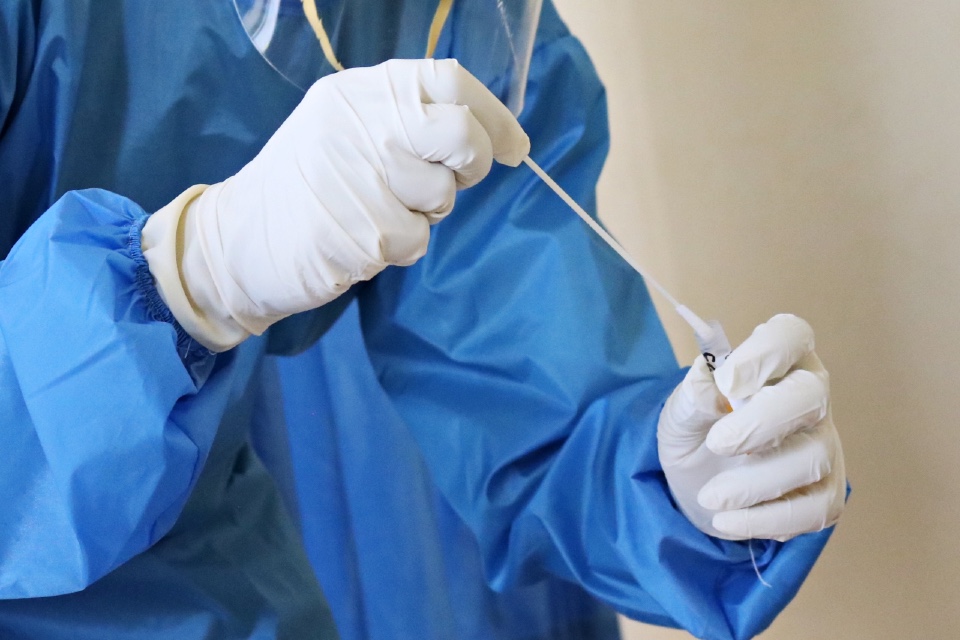The latest national flu and COVID-19 surveillance report, which includes respiratory syncytial virus (RSV) data, and national norovirus and rotavirus surveillance report, shows mixed activity from COVID-19 between week 52 and 51, but increases since the publication of the previous report in week 50.
SARS-CoV-2 positivity decreased to 10.1%, from 11.2% in the previous week, according to data from Respiratory DataMart.
COVID-19 case rates and positivity in Pillar 1 remained stable, with decreases observed in some age groups, regions, and ethnic groups in week 52.
The total number of reported SARS-CoV-2 confirmed acute respiratory incidents remained stable compared to the previous week, with 50 incidents reported in England during week 52.
COVID-19 hospitalisations increased to 5.2 per 100,000 in week 52, compared to 4.8 per 100,000 in the previous week. Hospitalisations were highest in the group of those aged 85 years and over.
COVID-19 ICU admissions increased in week 52 compared to the previous week.
Two-thirds (66%) of sequenced SARS-CoV-2 cases were classified as BA.2.86 (V-23AUG-01) in week 52.
The highest hospital admission rate is currently in South West at 6.48 per 100,000. Most regions experienced an increase in hospital admission rates this week.
Among age groups, those aged 85 years and over had the highest hospital admission rate, reaching 55.01 per 100,000, with increases observed in all other age groups except those aged 5 to 14 years.
The overall weekly ICU or HDU admission rate for week 51 increased to 0.24 per 100,000 from 0.15 per 100,000 in the previous week. The ICU or HDU admission rate increased at low levels in week 52 across UKHSA regions and age groups.
A total of 7,835,586 people aged 65 and over in England have been vaccinated with an autumn 2023 COVID-19 booster dose since 1 September 2023, totalling 70.2% of that population.
Flu & Norovirus Cases Rise
Through Respiratory DataMart, influenza positivity increased slightly to 11.8% in week 52 compared to week 51 11.2% in the previous week.
Primary care surveillance indicated a decrease in influenza-like-illness (ILI) consultations to 4.9 per 100,000 in week 52 compared to 7.7 per 100,000 the previous week and remained within the baseline activity level range.
During week 52, 14 confirmed influenza acute respiratory incidents were reported in England.
Norovirus activity has been increasing since week 44 of 2023, particularly in adults aged 65 and older. Laboratory reports in weeks 50 and 51 were 49% higher than the 5-season average for the same period 2-week period.
The total number of EV outbreaks reported during weeks 50 and 51 remained lower than the 5-season average for the same 2-week period, with the majority of outbreaks in care home settings.
Amy Douglas, Norovirus Epidemiologist at UKHSA, said: “At the end of December, Norovirus cases were nearly 50% higher than average for that time of year. We have also been seeing higher levels of other gastrointestinal infections, such as rotavirus and shiga toxin-producing E.coli.
“If you have got diarrhoea and vomiting, you can take steps to avoid passing it on. As the New Year gets underway, do not return to work, school or nursery until 48 hours after your symptoms have stopped and don’t prepare food for others in that time either. If you are unwell, avoid visiting people in hospitals and care homes to avoid passing on the infection in these vulnerable settings.
“Washing your hands with soap and water and using bleach-based products to clean surfaces will also help stop infections from spreading. Alcohol gels do not kill norovirus so don’t rely on these alone.”
Photo by Mufid Majnun on Unsplash






